Last updated: 8 November 2006
Last updated: 8 November 2006 |
Excellent weather prevailed at my home in Southern California for the Transit of Mercury on 8 November 2006. I used my ETX-90RA with a Coronado White Light Solar Filter as well as my Coronado Personal Solar Telescope (PST; piggybacked on the ETX). To provide some shelter from the sun I used the Clear Night Products TeleDome Portable Observatory (no longer available). All photographs were at Prime Focus of the ETX using my Nikon D70 DSLR attached with the Scopetronix Prime Focus T-Adapter. Images were done in Raw format with processing in Adobe Camera Raw and Photoshop CS2. ISO settings ranged from 200 to 1000 so that I could capture the images with minimal camera mirror enduced vibrations. Most images were cropped from the original Raw image size.
Here you can see my observatory setup, both outside and inside.
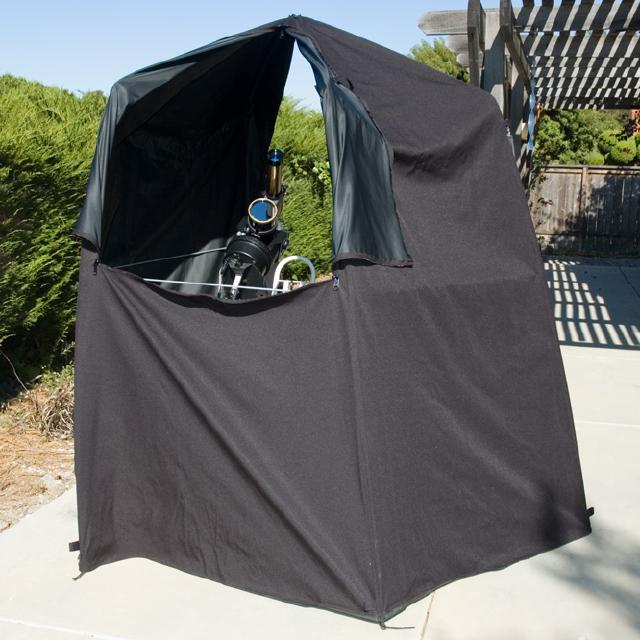
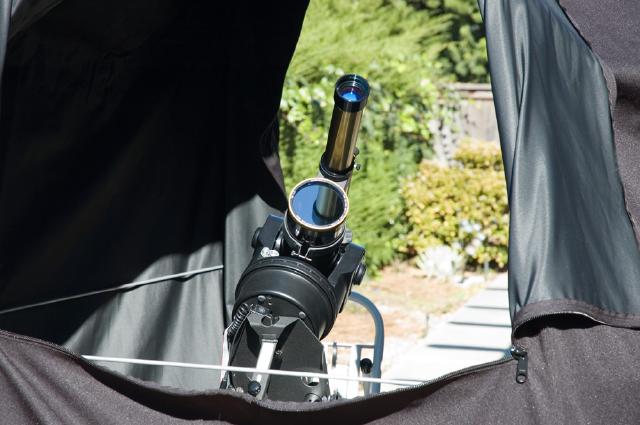
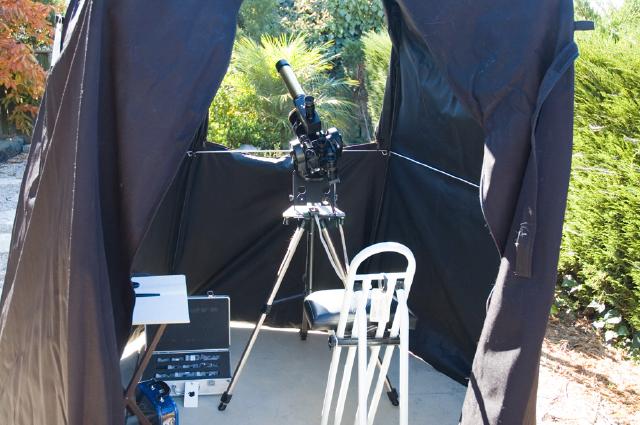
I missed capturing 1st Contact but here is a photo taken at 1115 PST, 1 minute after 2nd Contact. Mercury is the black dot at the bottom of the image. There is a nice Sunspot at the top.
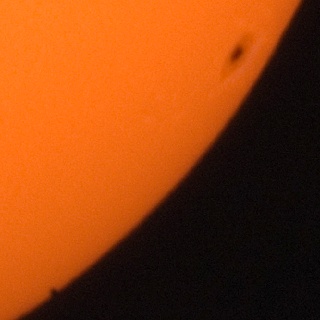
Here is a shot at 1120. You can see that Mercury has moved away from the Sun's limb.
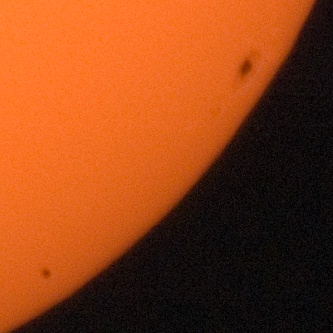
Here is a full disk image of the Sun with Mercury at the lower right and the large Sunspot near the limb on the right. It was taken at 1156 PST.
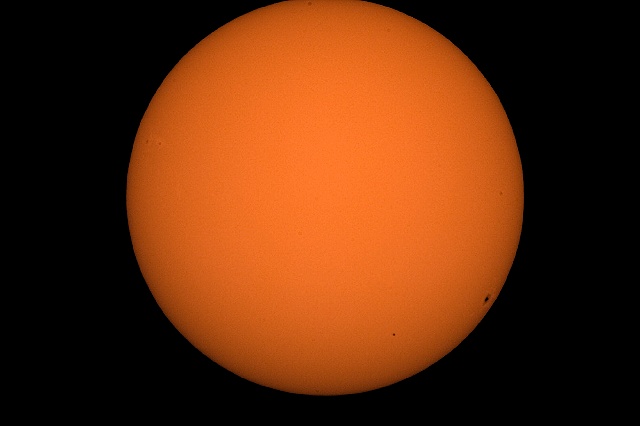
I then added a 2X Barlow Lens to double the magnification of the image being captured by the camera. Here is a cropped shot taken at 1227.

And another one taken at 1307 PST.

The midpoint of the Transit occurred at 1341 PST and here is full frame image taken at that time. You can see that Mercury has moved a long ways away from that Sunspot.

As the Sun began to get lower in the sky I began to notice that it was approaching the bushes next to where I had set up. By 1524 PST it was getting into the branches and so the image began to deteriorate, both from the Sun's low altitude in the sky and from the bushes. Here is the last image, full frame, that I was able to get. Mercury is that faint smudge near the center of the frame.
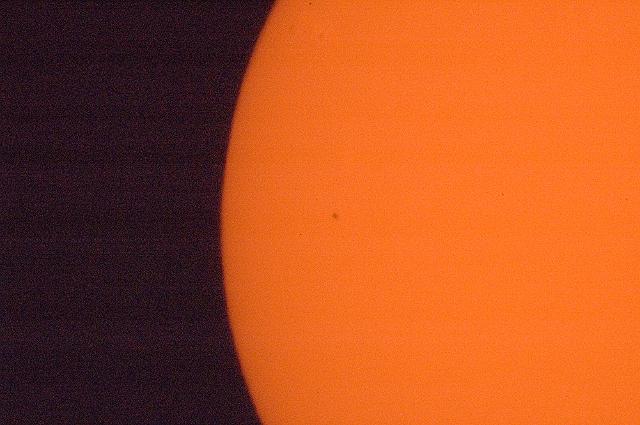
With the PST mounted piggyback on the ETX I was able to observe the Sun in H-Alpha. Mercury really stood out as a black dot with considerable contrast against the Sun's disk. There were a lot of prominences visible around the Sun's limb that changed during the five hours of the Transit. It was nice to observe the Transit in H-Alpha.
Due to the Sun disappearing into the bushes I was unable to see the end of the Transit. About 12 minutes before 3rd Contact the Sun was lost in the branches so I missed both the 3rd and 4th contacts. Rats.
Return to the top of this page.
See my report on the 15 November 1999 Transit of Mercury.
Go back to the ETX Home Page.